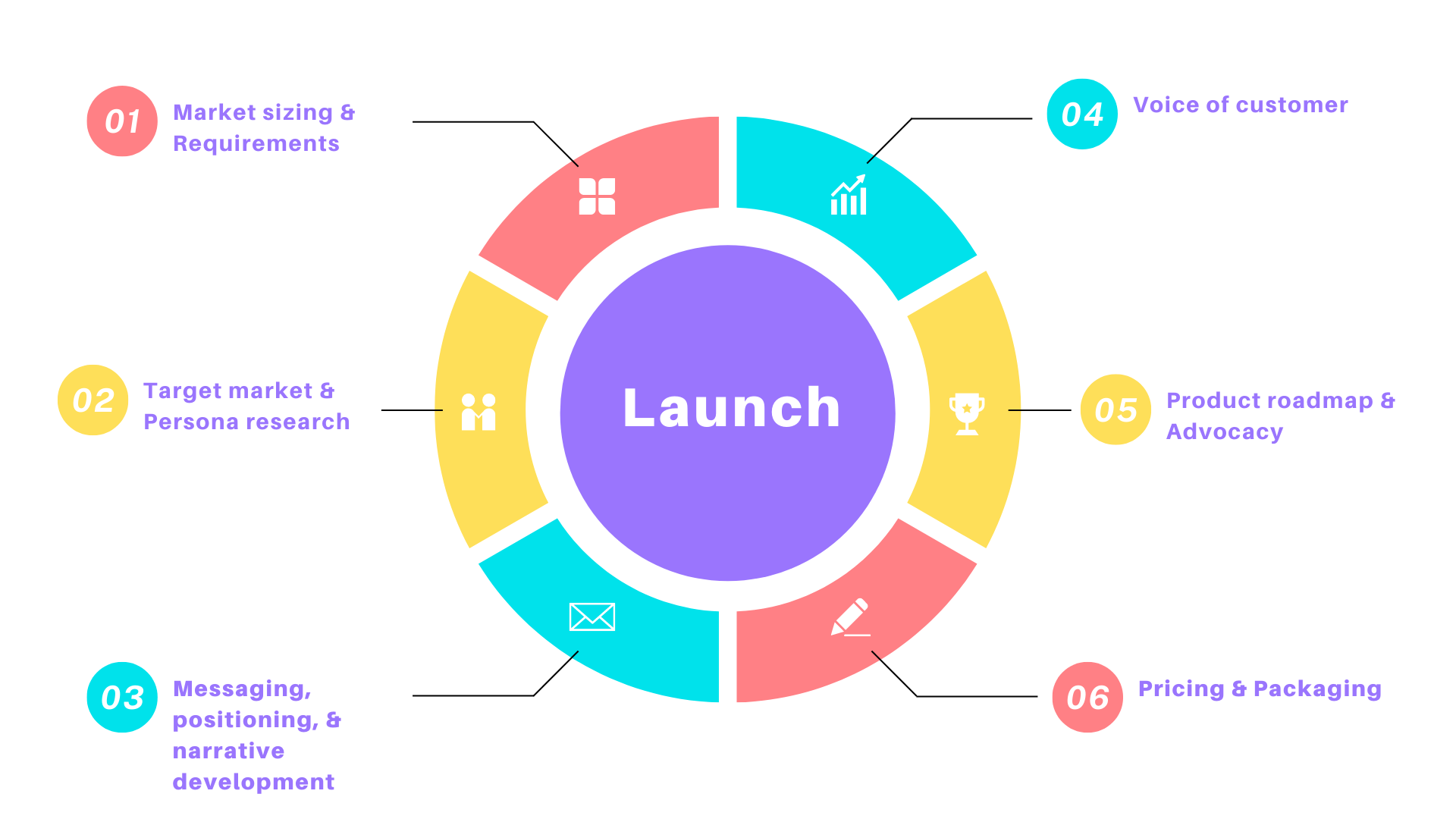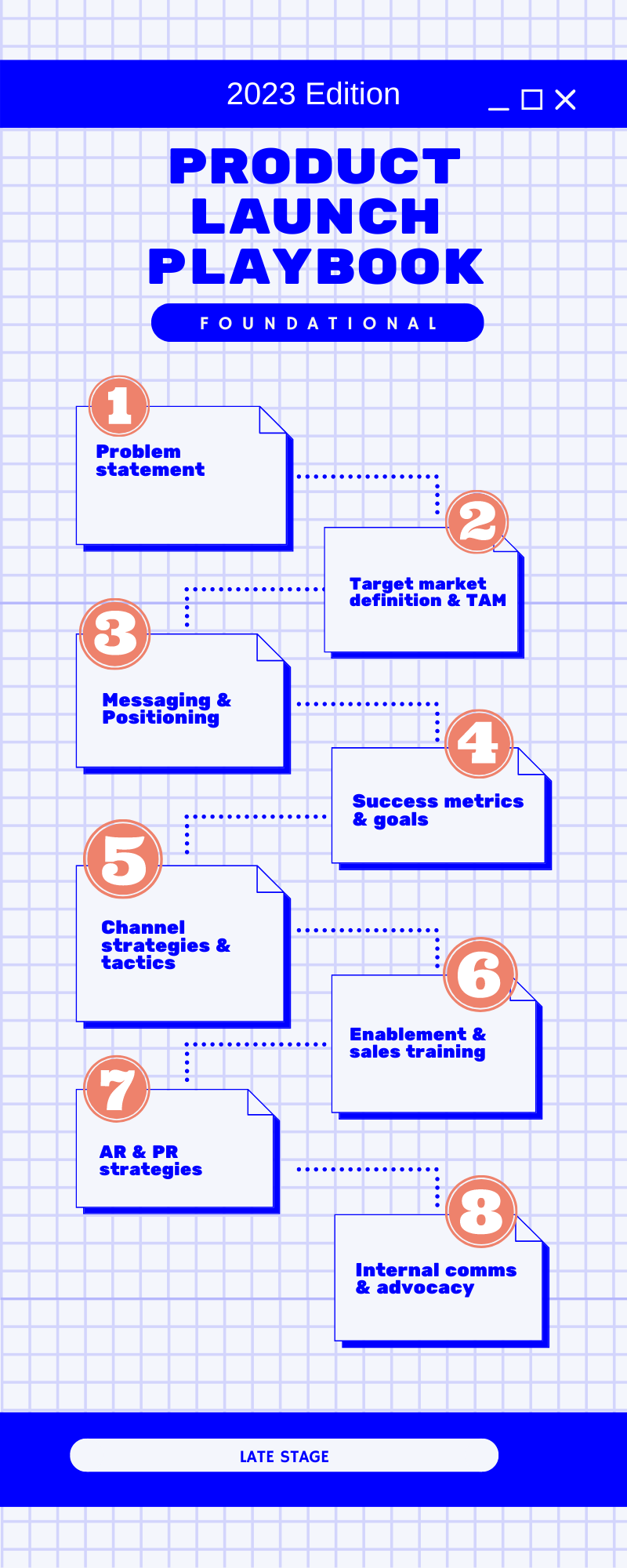Four Things You Must Know for Successful SaaS Product Launches in 2023
Launching a SaaS product in today’s hyper-competitive digital market is difficult. Let’s dive into the four pillars of launching any SaaS product successfully.

The buzz about the second Avatar movie or George R.R. Martin's new book doesn’t start the day it’s released. The hype begins long before that—and it’s the anticipation that gets an audience excited in the first place. As a product marketer, if you had the opportunity to lead a launch or participate, take it! And make it exciting!
Marc Andreessen once wrote, “Software is eating the world,” in a Wall Street Journal feature. That was over a decade ago, but it’s a line that holds today. Although the software-as-a-service (SaaS) ecosystem has felt the heat of weakening demand ahead of a looming recession, software development remains a high priority — 57% of IT companies plan to devote more attention to software development.
Launching a SaaS product in today’s hyper-competitive digital market is difficult. As a startup product marketing manager, I led a cross-function of work streams (marketing, sales, product, customer success, corporate communications) to ensure both the customers and employees understand the value of their products. The responsibility of a product launch is crazily broad. To name a few:
- Defining product requirements, target markets, and positioning
- Helping build a product roadmap
- Enabling the customer success & sales teams
- Researching competitors
- Collecting market signals and customer intelligence from pre-launch to post-launch
- Analyzing pricing and packaging
- Preparing your PR teams for media relations and executive interviews
While many of these work streams would typically be completely separate the one time, they all come together for a product launch. These moments don't come often.

So I like taking on the challenges of product launches because they are excellent opportunities for product marketers to:
- Build on many, if not all, of the core competencies that make you stronger
- Tell a story to the broader audience, including customers, prospects, partners, and employees
- Craft your original narrative and define the customer experience
- Generate a direct impact on revenue and business growth
Product launches are usually complex. They require a mix of both technical and SaaS marketing skills.
And with so many B2B SaaS products emerging, you need to know how to stand out and communicate your message to your target audience in an immersive way. While there’s no one-size-fits-all approach, 4 foundational elements are critical to defining your late-stage activities. Just like building a pyramid, the whole construction will collapse if the foundation is cracked. So this blog post will focus on the foundational elements of SaaS product launches that all successful ones share.
#1 A customer-focused problem statement
The first step in any good marketing strategy is to understand the problem your product can solve. This is especially true for SaaS product launches, where the competition is likely to be fierce. SaaS product marketing managers must deeply understand what customers are looking for to create compelling problem statements.
College writing has taught us what a problem statement is. Let's review its definition by Purdue Online Writing Lab:
"A problem statement is a move that a document makes to help the reader realize why the document is important. Problem statements can be either formal--like a thesis statement--or they can be informal--usually a sentence that explains how what you are saying will impact the reader.
As I highlight in the above quote, a powerful problem statement will help the audience see why your SaaS product is important. How? Show the impact!
I will use Eggplant, a software test automation tool, as an example.
An okay-level problem statement would be, "people want to get rid of manual QA tasks because they are time-consuming." Although it clarifies the problem and makes the business case, it doesn't really tell us anything about why time-consuming tasks are bad for users or businesses or what their impact is on the things that they want to achieve.
An effective problem statement goes one step further, "people want to get rid of manual QA tasks because it prevents them from focusing on higher-value work they love. " So you shouldn't talk a lot about the "problem" but more about the impacts or aftermaths — for example, people burn out, the software release is delayed, or customers complain about defects, all because of the manual QA tasks. Ultimately, that's the problem that any test automation tool can help with — enabling businesses to deliver better software more efficiently.
So the next time you're crafting your problem statement, ensure you include the tangible impact that this problem has on your customers' lives.
#2 Nailing your target markets
Every niche in today's SaaS landscape is competitive. Defining an accurate target market helps your marketing teams get more informed on the messaging, tactics, and proper channels to deliver the campaigns. It also helps you become more efficient in defining your buyer persona, identifying potential customers, and finding beta users. Without the right target market, a company will simply risk spending money on the wrong audience.

A target market can be defined using parameters that include demographic, geographical, behavioral and psychological factors.
Hubspot is an excellent example of finding the right target market. The company started when its founders noticed small-sized businesses were no longer pulled in by interruptive bids. So they focus on helping small-sized companies in North America who have been frustrated with outbound marketing results and are eager to improve their marketing ROI with a new methodology to hone their product message with a niche offering. Hubspot has become one of the first and most successful companies focusing on inbound marketing. It expects its TAM to grow 10% annually to reach $72 billion by 2027.
What makes its story so compelling is that your product launch is more likely to impact a defined target market. And as a product marketer, you will be able to:
- Identify how much addressable market you are going after with these launches.
- Help your team to craft a stronger problem statement along with more cost-effective go-to-market plans
- Project the ROI of the launch to help executives understand how important this launch
#3 Standout messaging in a world of noise
All classical marketing cases are based on messaging that is clever, strategic, and relevant to their target audiences.
Adidas: “Nothing is impossible.” Or, Apple: “Think different.” Smart, persuasive, and concise.
Messaging is vital to what every product marketer does because it encapsulates any communication of your company's core value proposition... For instance, your demand generation team can use that to create various ad copy; your SDRs need that to foster conversations with prospects; your spokespeople or executives can amplify that when giving a media interview or talking to investors. Here are seven ways you can make your message stand out and position your brand for success:
In other words, to stand out, you must be well-versed in how your rivals are articulating their business model, mission, product offering, and more.
Focus on the impact
As product marketing managers, we too often get wrapped up in the cool features built into the product. But your customers don't care about the features. They want to know how those features are going to change their lives. If you don't know how to find out what your customers care about, this exercise, "feature-benefits" mapping, will help you get started and focus on the impact.
Link it to that pain
Before you draft the messaging, you've probably spent a lot of time defining the target market and your problem statement. Customers want to be talked to as "humans," your messaging needs to show that you care about their problem and try to help with an easy, affordable, and effective solution.
Use social proof
Customers listen to other customers much more than they listen to companies themselves. When crafting these statements, ensure you have incorporated logos, testimonies, or reviews to back up in the future.
Incorporate numbers
During my time at UC Berkeley, I worked as a research assistant to cognitive science experiments on factors that increase the public acceptance of climate change. Through national surveys, we found that quantifiable fact is one of the most effective measures to change people's perspectives on "controversial" topics. Back to the world of product marketing, think about those specific pain points and make sure you have the numerical evidence to convince people - is your product going to save the QA engineers X hours, or is it going to save the company X headcounts?
Test, test, test
Once you’ve developed your messages, it’s time to test them internally. Your product people can help validate the impact, benefits, and numbers. Your PR team will make sure the messages are easy enough to understand. You can also do small-scaled A/B testing or focus group. So take the time to test and hone your messages until they’re perfect, and then roll them out!
#4 A clear, measurable goal
When asked about goals, many product marketing managers would say awareness, adoption, and revenue... Unfortunately, they probably will only achieve one or two at the same time from one launch.
And I can't stress enough how bad this "I want all" ambition is because each of these different goals has different tactics and metrics. So make sure you're setting yourself to success by focusing on a single goal.
For example, if you're going after adoption goals, one of your crucial launch activities will be paid ads or paid searches to drive a seamless conversion flow. You will collaborate closely with your customer success teams to notify your existing customer base. You need an optimized website with a solid trial signup flow so people can try your product and see its value quickly and easily. On the other hand, if you need to drive more product awareness, you may consider leveraging influencers, paid media, tradeshows, and thought leadership content for SEO.
Remember, launches give you a platform to say something to the world. They're one of your greatest tools to use as a product marketer. So you should always be thinking, what am I launching next, and how will I launch it? You should strive to tie your launches or launch moments together over a period, starting with maybe six months to a year. That way, you're telling a consistent, well-connected message to the market that resonates with buyers, making them much more effective. It's going to create a situation where one plus one doesn't equal to it equals three because these launches support and build on top of each other.


